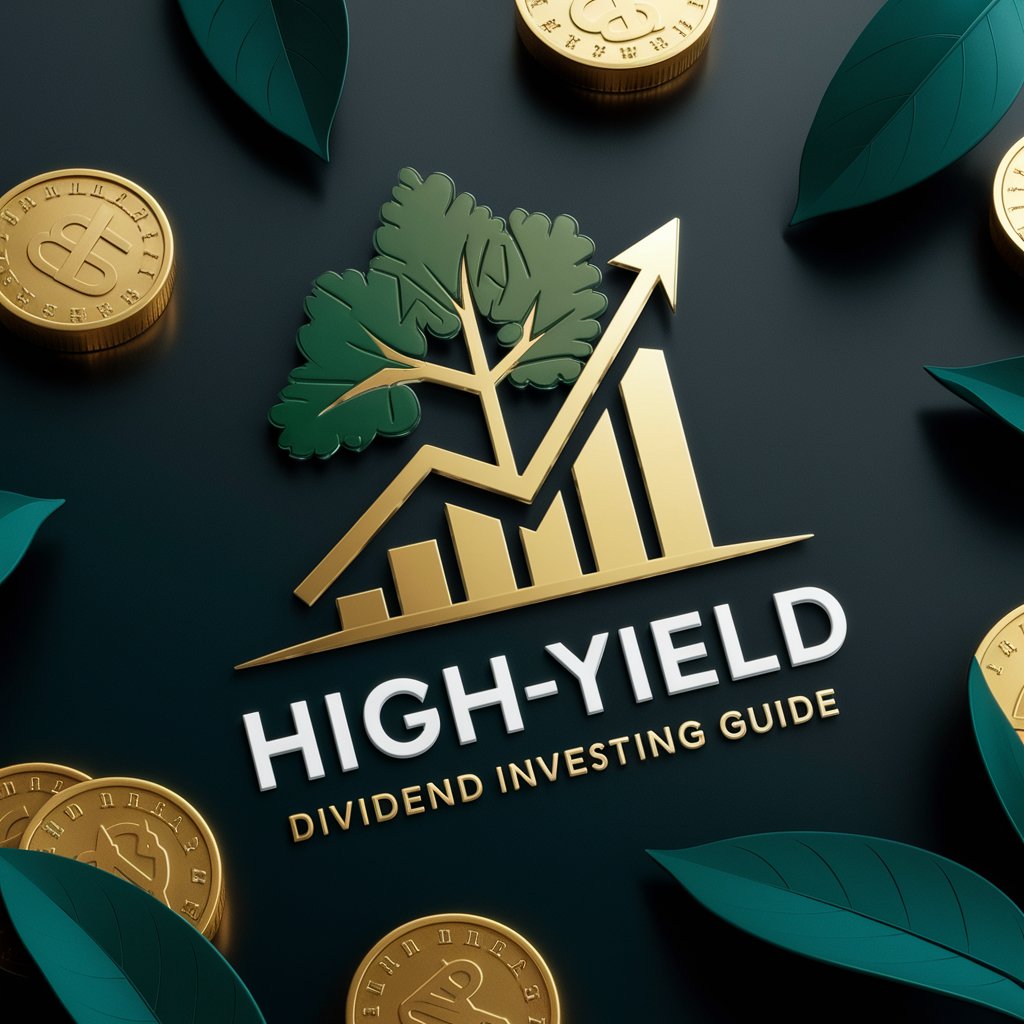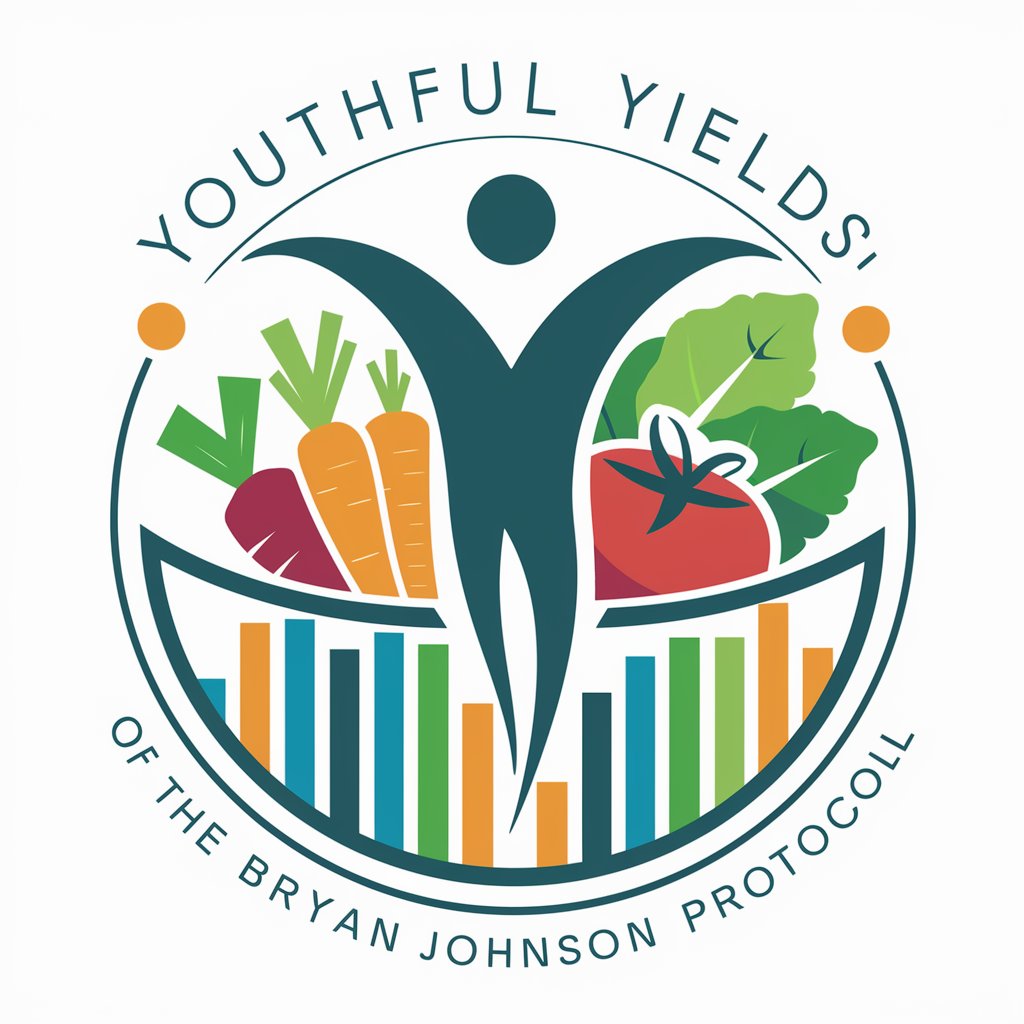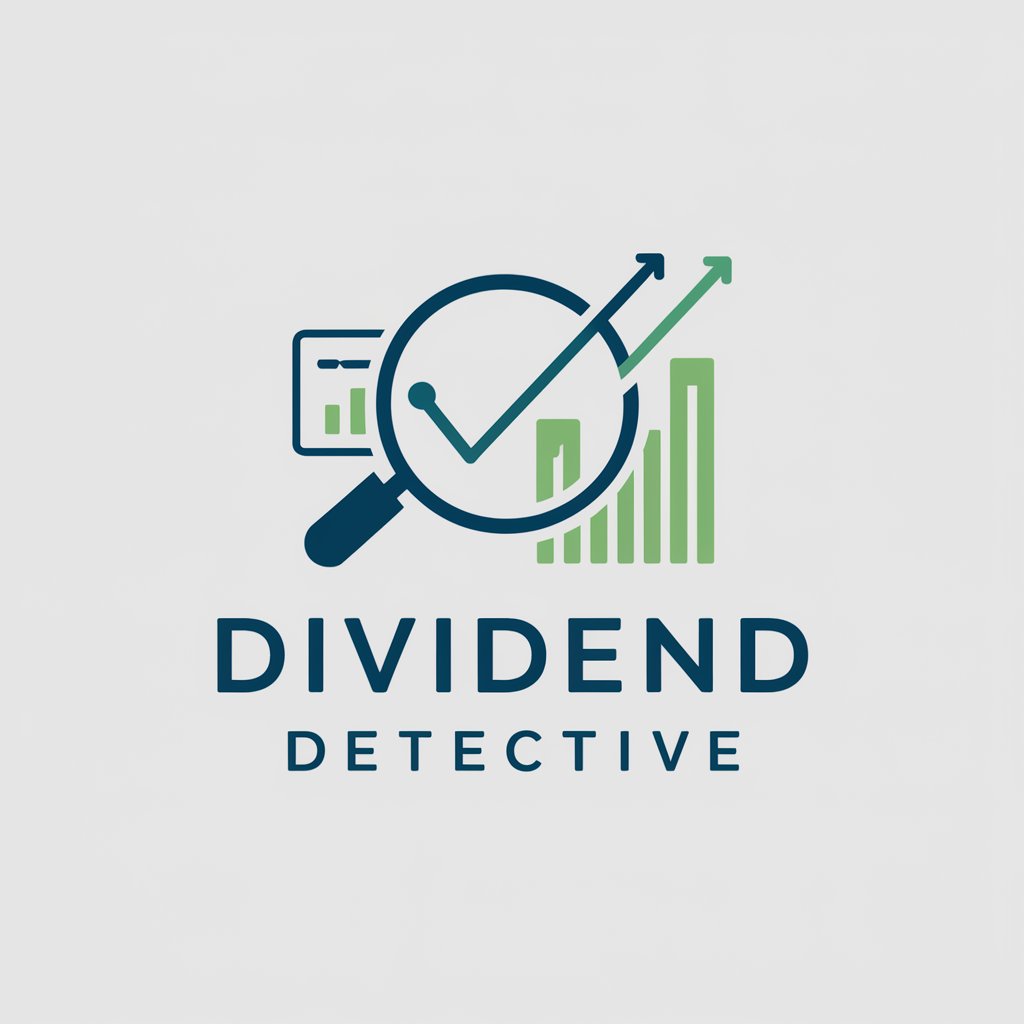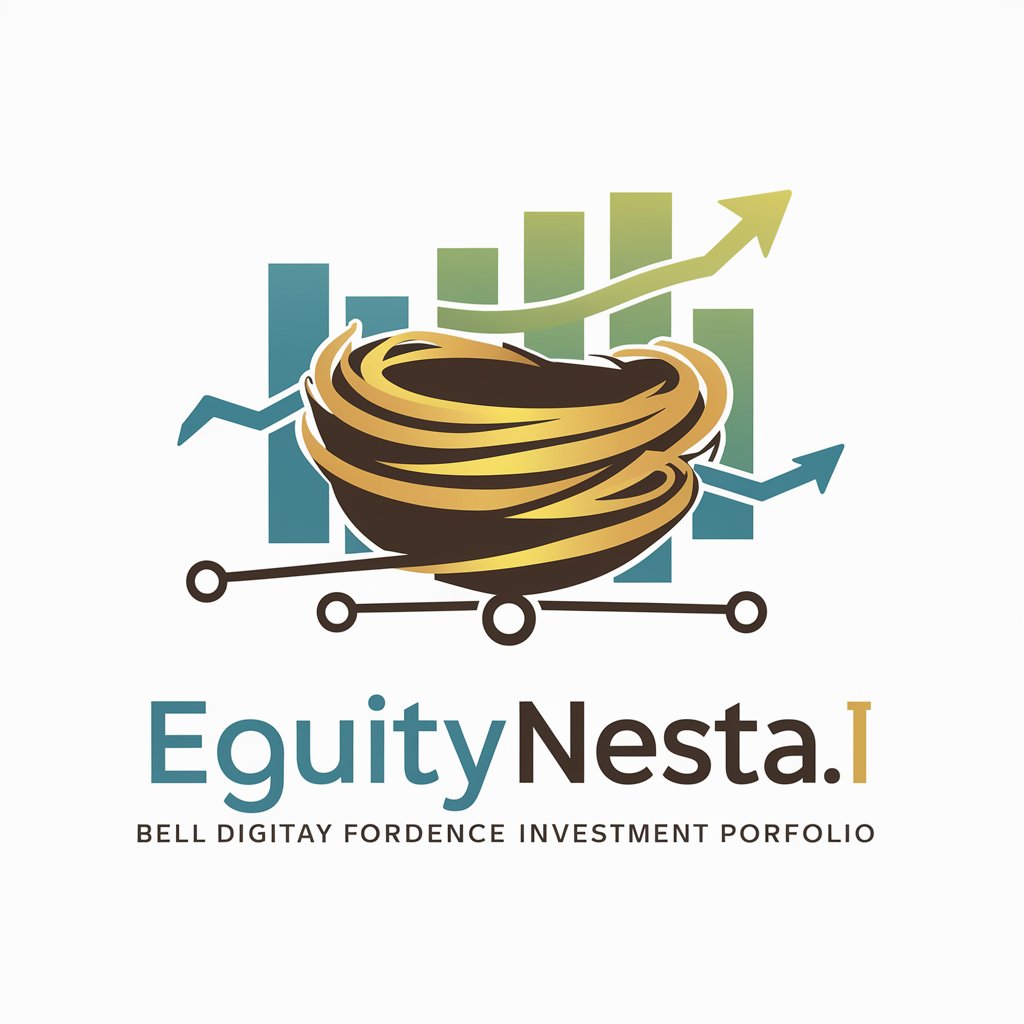
High-yield dividend investing guide - Dividend Yield Investing Tool

Welcome! Let's explore high-yield dividend investing together.
Mastering Dividends with AI
How can I find reliable high-yield dividend stocks?
What are the benefits of dividend reinvestment?
How do I build a diversified dividend portfolio?
What are the tax implications of dividend income?
Get Embed Code
Understanding the High-yield Dividend Investing Guide
The High-yield Dividend Investing Guide is designed to assist investors in navigating the realm of high-yield dividend stocks. Its primary role is to provide insights and tools necessary for researching and selecting investments that offer potentially higher dividends compared to the market average. This guide helps in building a diversified portfolio to manage risk effectively while aiming for consistent dividend income. It emphasizes the importance of dividend reinvestment, regular monitoring of investment performance, and understanding the tax implications of dividend earnings. An example of this guide's utility is seen in educating investors about the risks of chasing yield—choosing stocks with exceptionally high dividends might not always be sustainable, and such stocks may carry higher risks. Powered by ChatGPT-4o。

Core Functions of the High-yield Dividend Investing Guide
Research and Selection Guidance
Example
Teaching users how to analyze financial statements and dividend history to assess a company's ability to sustain high dividends.
Scenario
An investor looking to allocate part of their retirement funds into stable, income-generating assets might use this guide to learn how to scrutinize dividend payout ratios and historical dividend growth rates.
Diversification Strategies
Example
Advising on sector diversification to avoid over-exposure to cyclical economic impacts that could affect dividend payouts.
Scenario
A new investor might follow the guide's advice to balance their portfolio across several sectors such as utilities, real estate, and consumer staples, which historically show different volatility levels and dividend stability.
Dividend Reinvestment Education
Example
Explaining the benefits of using dividend reinvestment plans (DRIPs) to leverage the power of compounding.
Scenario
An investor uses the guide to decide to automatically reinvest dividends from a telecommunications company, gradually increasing their holdings and potential dividend income over time without additional out-of-pocket investment.
Monitoring and Adaptation Techniques
Example
Detailing how to regularly review and adjust one's investment portfolio in response to financial market trends or changes in individual company performances.
Scenario
Following the guide's principles, a seasoned investor periodically reviews their portfolio to identify and possibly divest from stocks that have cut dividends, thus safeguarding their income stream.
Tax Implications
Example
Providing insights into how dividends are taxed and strategies to minimize tax liabilities, depending on the investor's country of residence.
Scenario
An investor consults the guide to understand how qualified and non-qualified dividends are taxed differently in the United States, influencing their investment choices based on tax efficiency.
Ideal Users of the High-yield Dividend Investing Guide
Retirement Savers
Individuals focusing on building a retirement portfolio that can provide stable, passive income through dividends. They benefit from the guide's emphasis on long-term, sustainable investing strategies.
New Investors
Those new to the stock market can find great value in the structured approach to high-yield dividend investing, helping them make informed decisions and avoid common pitfalls like chasing exceptionally high yields without considering company fundamentals.
Income-focused Investors
Investors who prioritize regular income over capital gains. The guide helps them identify stocks with reliable and sustainable high dividend yields, crucial for managing cash flow needs.
Tax-conscious Investors
Investors looking to optimize their investments for tax efficiency will find the guide's tax-related advice particularly valuable, helping them understand how to structure their portfolios to potentially lower their tax burden on dividend income.

How to Use the High-Yield Dividend Investing Guide
Start Free Trial
Access the High-Yield Dividend Investing Guide at yeschat.ai for a hassle-free trial without needing to log in or subscribe to ChatGPT Plus.
Explore Features
Navigate through the guide to understand the various tools and features available such as dividend yield filters, investment calculators, and historical data analysis.
Set Investment Goals
Define your investment goals based on your financial situation, risk tolerance, and time horizon to use the guide effectively in selecting suitable high-yield stocks.
Engage with Educational Resources
Utilize the educational materials provided to learn about dividend investing, tax implications, and the risks associated with high-yield stocks.
Monitor and Adjust
Regularly monitor the performance of your selected investments through the guide and adjust your strategy based on market conditions and personal financial goals.
Try other advanced and practical GPTs
Fortune Weaver
Unlock your potential with AI-powered astrology

Animation Wizard
Animating Ideas with AI-Powered Creativity

Whiteboard Animation Expert
Bringing Stories to Life with AI

Selfie Animation⭐⭐⭐⭐⭐
Bring your selfies to life with AI.

Animation Mentor
Animating your ideas with AI

Animation Architect
Craft seamless animations with AI

High Yield Savings
Maximize Savings, Powered by AI
Youthful Yields
Empowering health with AI-driven coaching

Fluency Fast
Master Languages with AI Power

Fast Helper
Revolutionize Coding with AI

Fast Writer Pro SEO Optimized
Empower Your Writing with AI

Fast Mail
Empowering your emails with AI

Frequently Asked Questions about High-Yield Dividend Investing Guide
What exactly is high-yield dividend investing?
High-yield dividend investing involves selecting stocks that pay above-average dividends, providing investors with a steady stream of income, typically from companies in stable industries.
How can I manage risks in high-yield investing?
Risk management in high-yield investing involves diversifying your portfolio across various sectors, regularly reviewing your investments' financial health, and being cautious of very high yields, which could be unsustainable.
What are the tax implications of dividend investing?
Dividend income is often taxed at a different rate than regular income, which can vary depending on the investor's country of residence. Understanding these implications is crucial for effective tax planning.
Can I reinvest my dividends through this guide?
Yes, the guide can help you set up a dividend reinvestment plan (DRIP), which automatically reinvests the dividends you earn into additional shares, compounding your investment over time.
How often should I review my dividend investments?
It's recommended to review your dividend investments at least annually, or more frequently if major economic or sector-specific events occur, to ensure alignment with your financial goals and risk tolerance.





